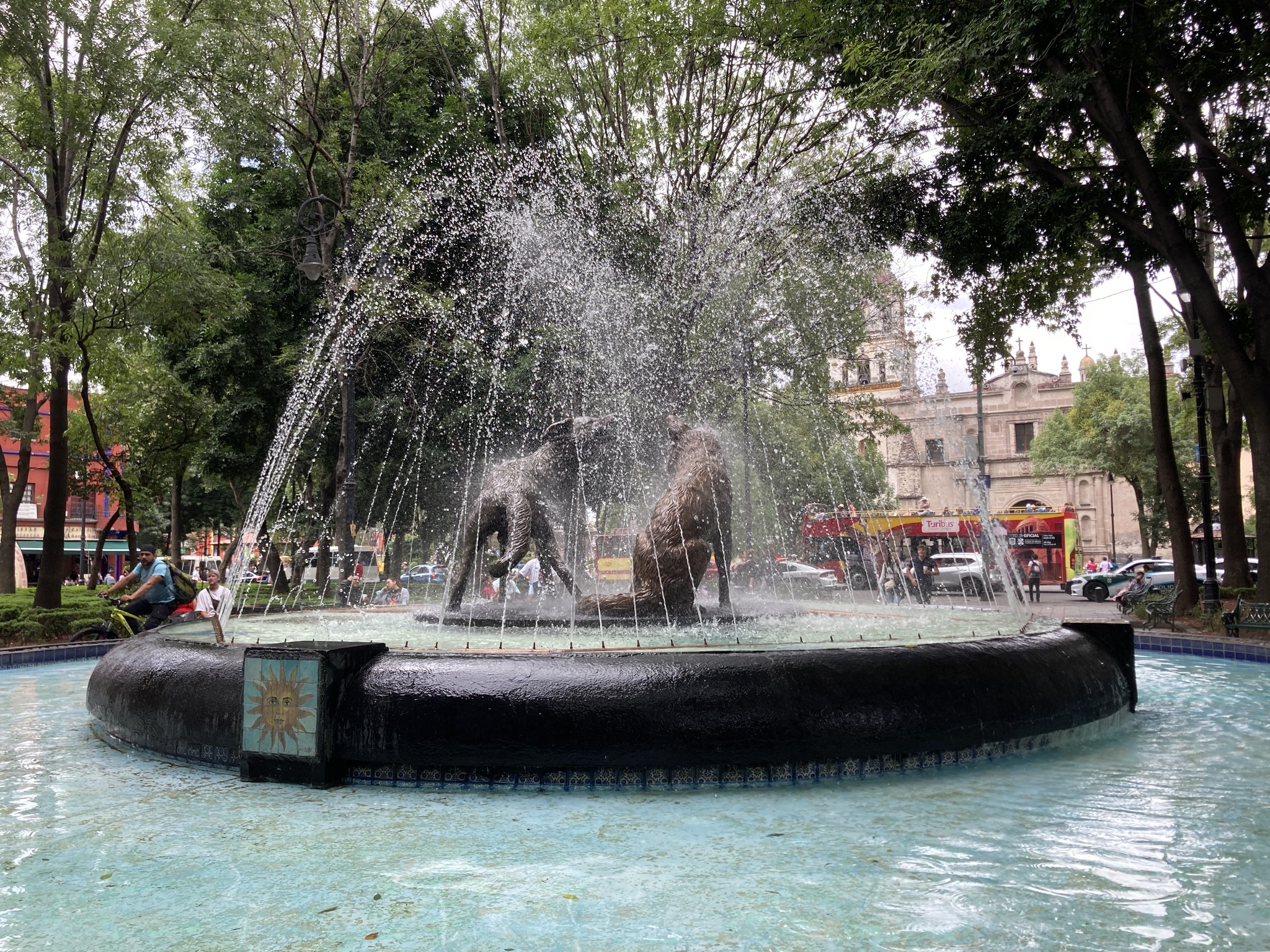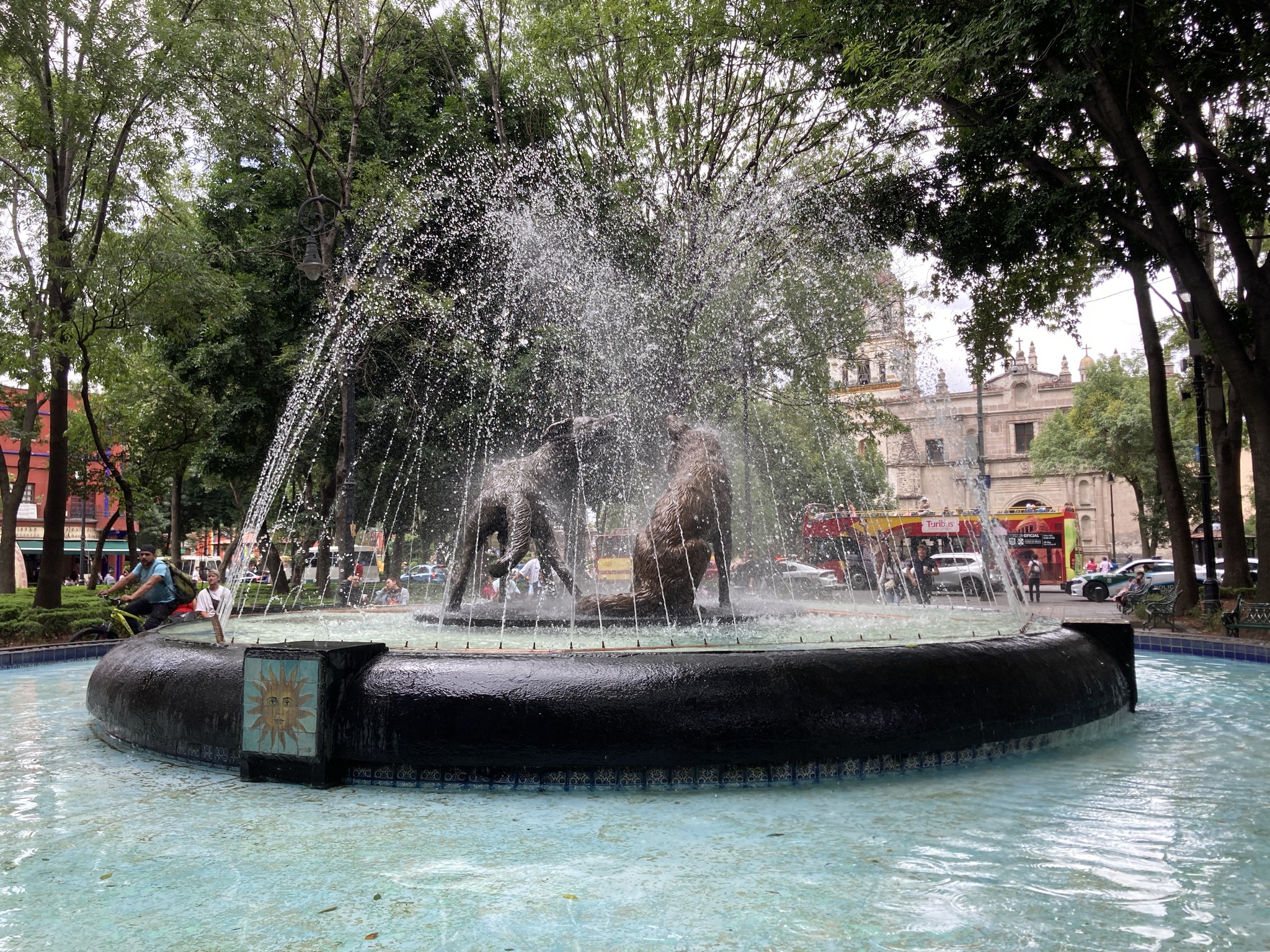Coyoacán Centro
The historic center of the Coyoacán is a flowery, important and influential part of Mexico City.


Visitors come for the Frida Kahlo museum. But most quickly discover the central gardens and surrounding streets. The market, mature trees, and cobblestone paths seem to conspire and converge here. The result is attractive in almost every corner and along every avenue. Francisco Sosa Street is perhaps one of the most beautiful streets in the city, with ancient ash trees and colonial mansions.
It's a great area for walking, with loads of museums, restaurants, memorable food, and much to see and remember. Most strollers will head for one of the three separate neighborhoods. Colonia del Carmen is to the north and includes the Parque Viveros to the west. To the southwest is Santa Catarina, and to the southeast is La Concepción.
You can begin your tour at La Casa de Cultura Jesús Reyes Heroles. It's a historic cultural and community center in Coyoacán on the Avenida Francisco Sosa at #202. The north façade provides a backdrop to the famous Plaza Santa Catarina. It's so big though that some passersby won't realize that there is a complete cultural center just beyond.
The Avenida Francisco Sosaruns from Universidad to the Calle Tres Cruces in the Coyoacán center. It is one of the best known and most famous streets in this area and for many, the street is emblematic of "Old Coyoacan.
At number 383, is the famous Fonoteca Nacional, a national repository of recordings and music. Created just in 2011, the space is dedicated to research, recording, and the preservation of Mexico's recording and musical heritage. The 18th-century building shows clear Andalusian and Moorish influence, and was legendarily the home of Pedro de Alvarado.
A little further on, at number 363, is La Mano, a great place to have coffee, breakfast or lunch, with a store selling handcrafted and designer gifts. La Mano also organizes various cultural events, such as movie nights, small concerts and lectures that fit nicely in an open-air wooded lot.
TheJardin Centenario you will find the iconic "Los Coyotes" fountain and the old San Juan Bautista Church and Monastery. It's actually quite a large and historic complex, often overshadowed by the more colorful happenings in its immediate vicinity.
The Plaza Hidalgo, outside the Casa de Cortés, is the other large plaza in the center of Coyoacán. Next to the Jardín Centenario, the two together are referred to as the center of Coyoacán.
The Museo Nacional de las Culturas Populares is one of the highlights of any trip to the area. Most visitors arrive from the Plaza Hidalgo. Some people may think it is just another arts and crafts market, as there are almost always a few vendors set up outside, however, you should venture inside and visit. Dedicated entirely to the popular cultures of Mexico, the result is a museum of popular, indigenous, and urban works.
The Quinta Margarita was part of the old customs house, originally part of the San Juan Bautista Church. The land was nationalized in 1860 and the houses date from the end of the 19th century and currently houses the María Sabina Hall and the Quinta Margarita Galleries.
The Museum of Leon Trotsky was the scene of one of the most controversial assassinations of the 20th century. In these very walls Leon Trotsky and his wife, Natalia Sedova, spent their last years. Being a refuge during a chaotic period of contemporary history, to visit today is to re-examine one of the most fascinating revolutionary characters in history.
No matter how you get to the Center of Coyoacan, it doesn't take much convincing. It's one of the great strolling neighborhoods of Mexico City and a great place to visit again and again.